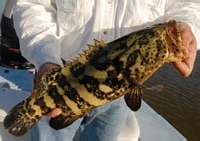
Ernest Hemingway called Key West home, as did Tennessee Williams. It was here that Hemingway was introduced to big game fishing and the lifestyle that led to so many of his greatest stories, and it was here that Williams wrote the first draft of A Streetcar Named Desire. Key West is so conducive to creativity that it has spawned some of America’s greatest literature and legend. Can there be a place as romantic as Key West?
Many of the original immigrants to Key West were Bahamians, the sons and daughters of British loyalists who fled to the Bahamas after the American Revolution. They called themselves “Conches” and made their fortunes through the salvaging of wrecks, smuggling, and other occupations of opportunity. It is a culture that has always been on the edge, situated on the southernmost point of the United States in a turquoise environment of such beauty as to banish all stress upon arrival.
In the heart of this marvelous and sultry culture is the Marquesa Hotel, sitting one block from Duval Street. A renovation of some of the nineteenth-century “conch” houses, stores, and even a convent, the Marquesa Hotel and the world famous Café Marquesa offer the quintessential Keys experience and have been rated by Travel and Leisure as one of the top ten hotels in the Untied States. Zagat survey rated the Café Marquesa as one of the top 100 hotel restaurants in the United States as well.
For the angler, this is paradise, albeit a challenging one. There can be no more beautiful experience than fishing a white sand flat in a turquoise sea, looking for bonefish, tarpon, and permit. To catch them, one must see them, and with the help of experienced guides, anglers find themselves casting to the greatest collection of gamefish, renowned for sheer speed and power. After a day on the flat here is my description:
The brilliant silver of the bonefish perfectly reflects the hues and tones that surround it. At best you learn to see apparitions. The practiced eye eventually begins to discern the fish as it moves slowly in its quest, often appearing as if suddenly revealed by the hand of a magician. Those startling moments happen often and add to the mystery of this remarkable fish. Scanning the bottom you are all too aware that you are looking at a fish and not seeing it. Perhaps the real joy of this pursuit is the never-ending surprise as the sun, the sand, the eye, and the mind suddenly conspire to give you a glimpse of the ghost.

The beauty of it all is that the most difficult of fish to see must be seen to be caught. When all is right, the bone is spotted at distance. The cast is laid in front, presenting the tiny, sparkling pseudo-crustacean in position to be pulled away as if escaping. When it settles to the bottom, a strip of the line puffs the fly across the sand. If the gods are kind, the fish suddenly darts to the fly and, tipping downward, inhales it. A long and gentle strip ensures the hook set and this silver rocket rips across the flat in pursuit of freedom—all unfolding in a blue, crystalline theater.
Hemingway, endless flats to hunt elusive fish, sultry nights, and legends of the sea—romantic? One would think.